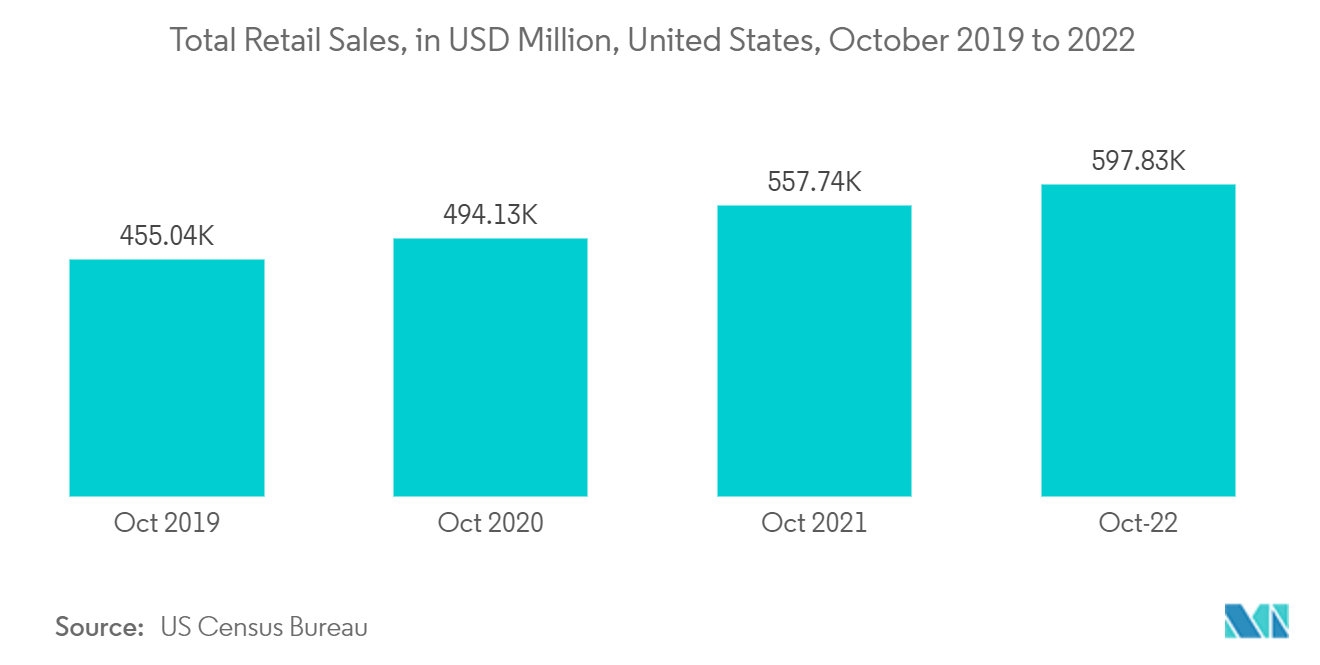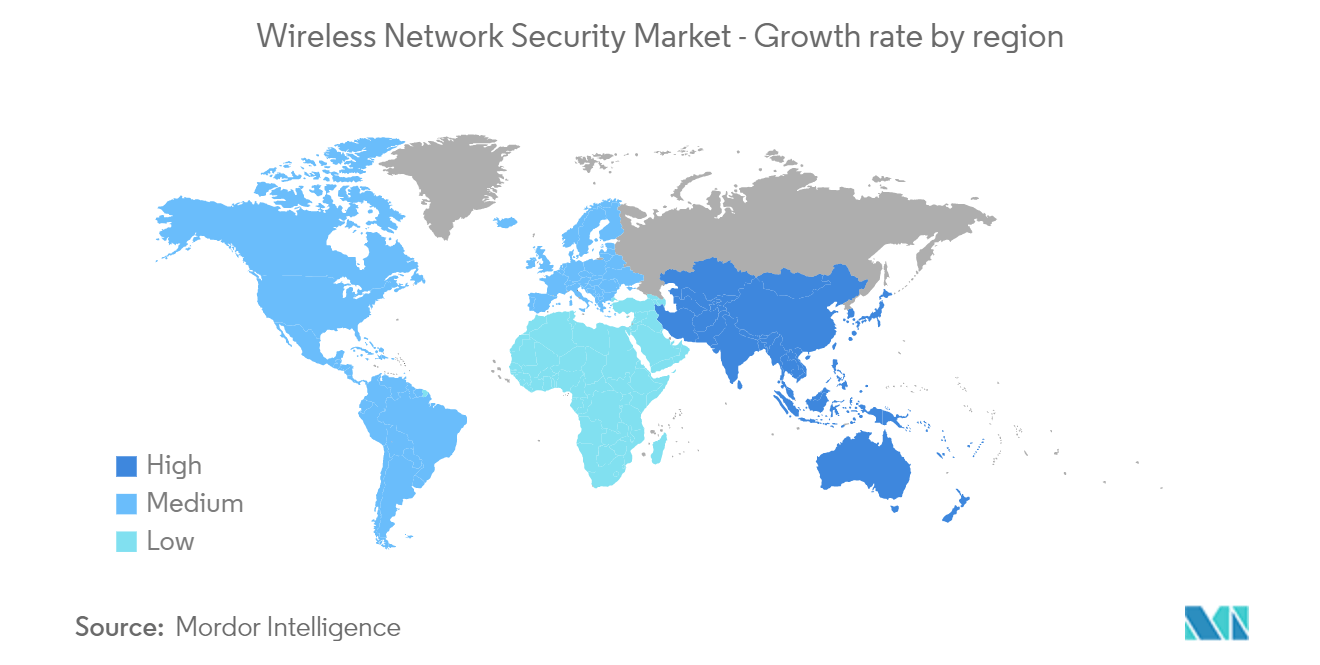Market Trends of Wireless Network Security Industry
This section covers the major market trends shaping the Wireless Network Security Market according to our research experts:
Retail is Expected to Hold a Significant Share
- The retail industry is witnessing growth in the last two years, especially with the massive expansion of the e-commerce industry across the globe. Hence, retailers are utilizing IoT solutions to improve their operational efficiency and enhance the customer experience to gain competitive advantages. With the increasing IoT use in retail space, the wireless security demand is expected to augment over the forecasted period. Retail companies are facing a landscape filled with growing and increasingly sophisticated threats, and the financial impact of these breaches is soaring.
- Moreover, the number of IoT-connected devices in retail is increasing exponentially. For instance, in the EU alone, the number of connected devices used in the retail industry was 2.28 million units in 2019 and is expected to grow to 3.09 million units by 2025, as per ENTO reports. IoT plays a significant role in process automation and enhancing retail stores' operational efficiency. It provides energy optimization, surveillance and security, supply chain optimization, inventory optimization, and workforce management. Also, IoT is gaining capabilities in cold chain monitoring for temperature-sensitive grocery and pharmaceutical goods.
- For instance, Aruba is reshaping its edge networking with a more user-friendly configuration for its SDBranch, enabling more secure, simplified deployment and managing large distributed retail networks. IoT is also helping retailers to offer better customer experience, hence helping gain profit margins. For instance, US-based retailer Walgreens is experimenting with IoT-enabled displays on refrigerator doors that utilize face detection technology to show ads based on approximate age and gender. Many European retailers are installing small, customizable, IoT-connected dashboards or buttons to gather customer feedback and use those insights to enhance customer experiences.

North America is Expected to Hold a Major Share
- North America is expected to contribute to the market's growth significantly. The United States plays a crucial role in generating demand from the region compared to Canada. The area is a pioneer in advanced technology adoption. Additionally, the presence of large enterprises, the increasing network attack frequency, and the growing number of hosted servers in the United States are driving the market growth. Moreover, the region includes a significant foothold of critical vendors in the market. Some include Cisco Systems, Juniper Networks, Inc., Fortinet, Inc., and Symantec Corporation.
- Moreover, cyberattacks in the North American region, especially in the United States, are rising rapidly. They have reached an all-time high, primarily owing to the rapidly increasing number of connected devices in the region. In the United States, consumers use public clouds, and many mobile applications are preloaded with personal information for the convenience of banking, shopping, communication, etc. With the increasing smart home environment in the United States, the possibility of security and privacy hazards through exploiting malicious hackers is also rising.
- The United States includes the highest wireless devices adoption. The growth in wireless devices is fueling robust security solutions to protect the misuse and unauthorized access of data. For instance, according to Cisco Systems Inc., among the countries with the highest average per capita devices and connections by 2023 United States would be leading with 13.6%. Cloud and digital transformation increased the overall data breach cost. Increasing cloud migration, mobile platforms usage, and IoT devices were drivers in the region. Organizations in the United States had the highest price at USD 8.19 million, which is the average cost of a lost or stolen record.
- In September 2022, the National Institute of Standards and Technology (NIST) issued draft security recommendations for IoT devices in the United States. Because IoT regularly poses a cybersecurity risk through hacks and data breaches, the NIST's Core Baseline highlights a list of recommended security features for manufacturers to incorporate into their IoT devices and guidelines for consumers to look for on a device's box or online description while shopping.
- Moreover, in November 2022, the US Federal Communications Commission (FCC) announced the ban on telecommunications and video surveillance equipment from prominent Chinese brands, including Huawei and ZTE. US security officials have alerted that equipment from Chinese brands such as Huawei could be used to interfere with fifth-generation (5G) wireless networks and collect sensitive information. Such rising threats are expected to increase the demand for wireless network security solutions over the forecast period.


